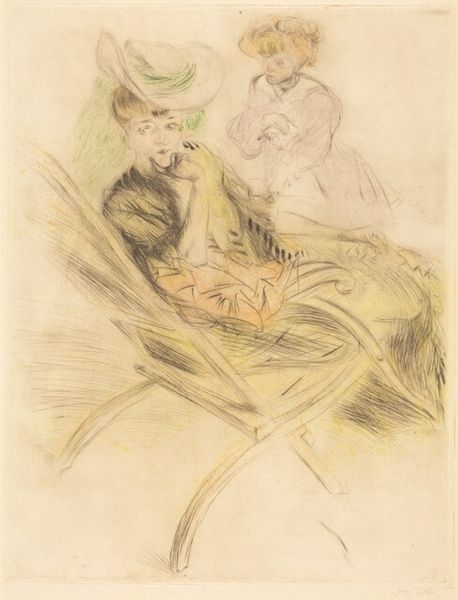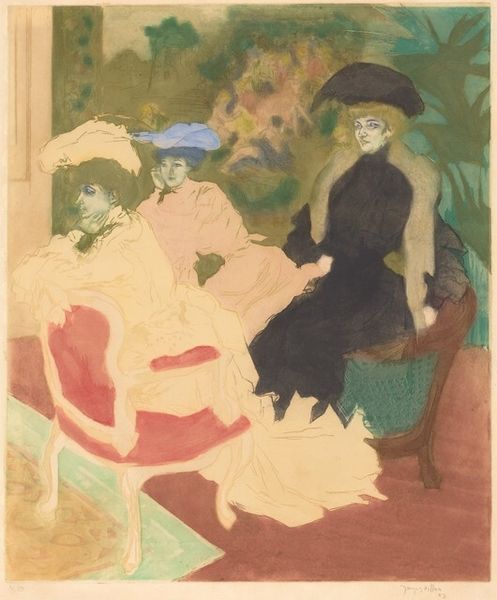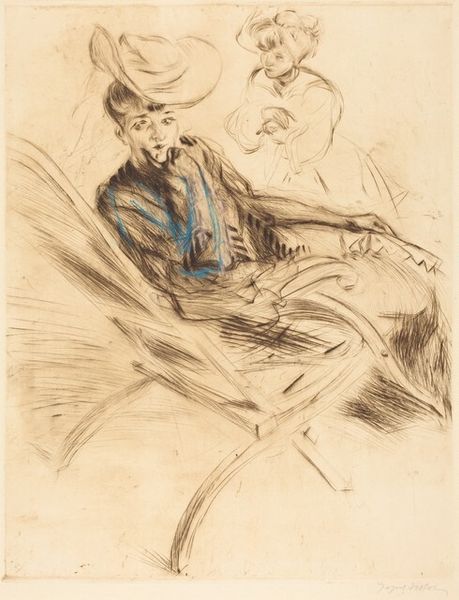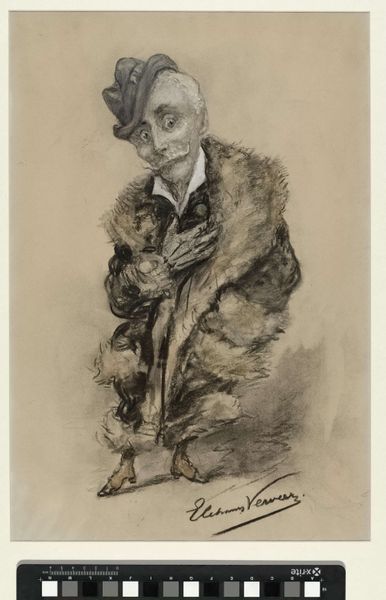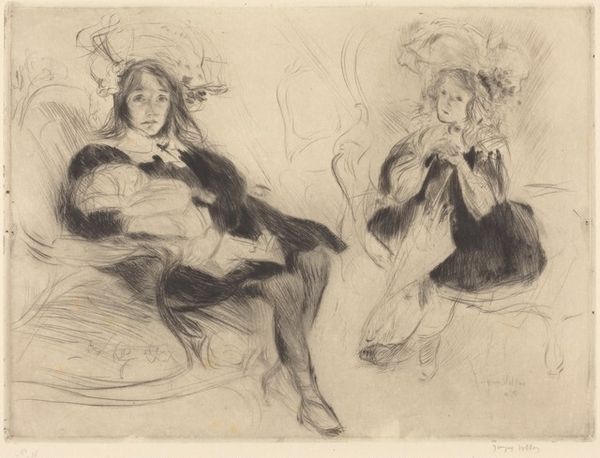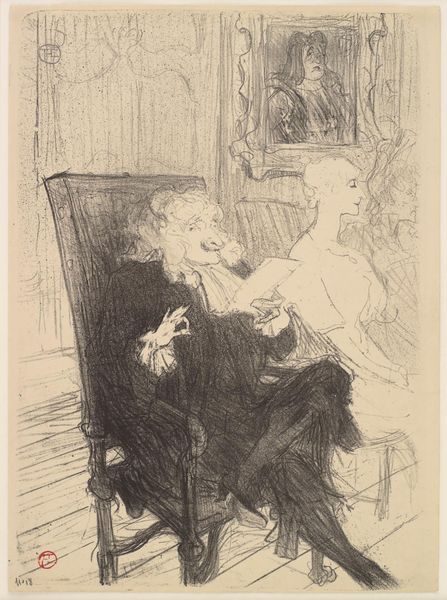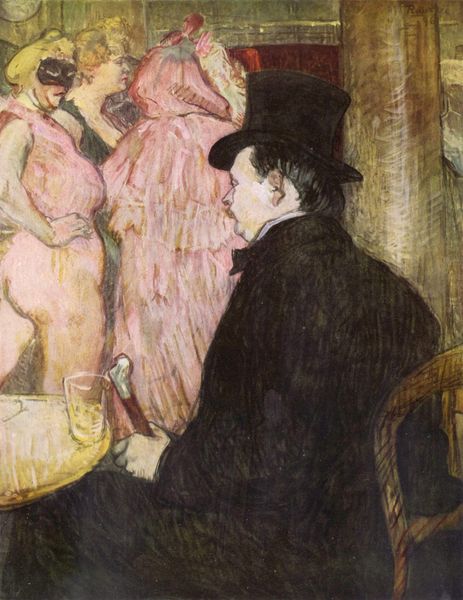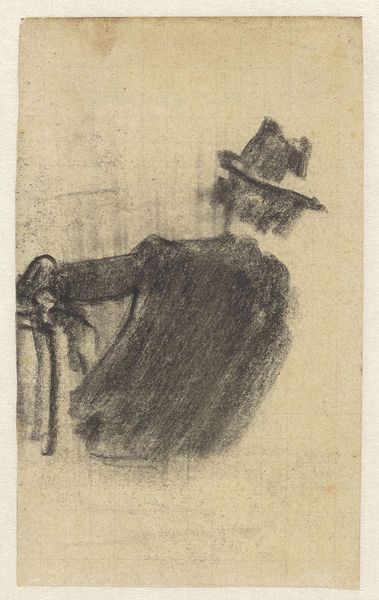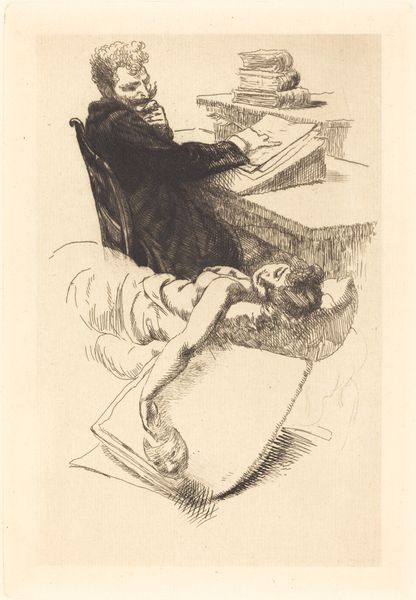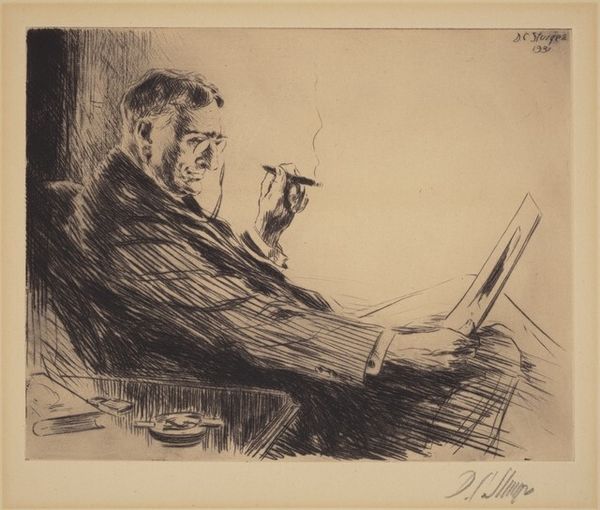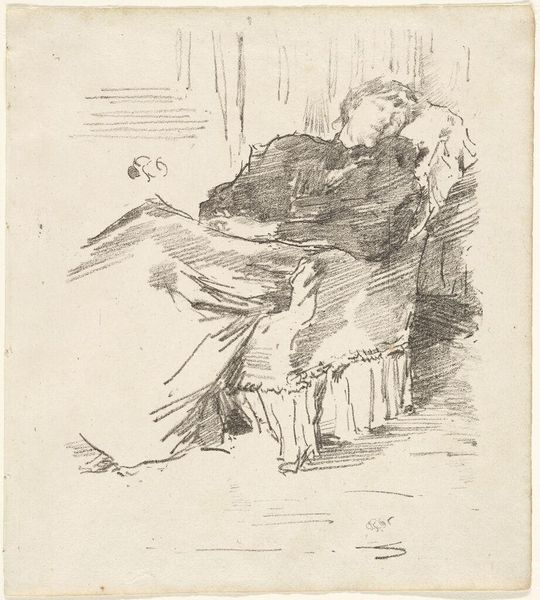
Dimensions: plate: 34.4 x 45.4 cm (13 9/16 x 17 7/8 in.) sheet: 45.7 x 64 cm (18 x 25 3/16 in.)
Copyright: National Gallery of Art: CC0 1.0
Editor: Here we have Jacques Villon's "Nevers in Paris," created around 1904. It's a watercolor and print combination. I’m immediately drawn to the contrast between the sharply defined man in the foreground and the more loosely rendered figures behind. How do you interpret this work? Curator: From a materialist perspective, this print holds significance in understanding early 20th-century printmaking’s relationship to mass production. Look closely. The watercolor adds a layer of individual artistic labor atop the mechanically reproduced print, creating a tension between the unique artwork and the potential for limitless copies. Editor: That's a really interesting way to look at it. So you are saying the choice of using a print challenges the idea of art being this singular, precious object? Curator: Precisely! And consider the social context. Prints were more accessible to a wider audience than unique paintings. Villon, by combining printmaking with watercolor, engages in a dialogue about who gets to own and experience art. Who is this artwork meant for, and why this choice of medium? Editor: So, it's about democratizing art, maybe? Bringing art to the masses? Curator: In a way, yes. The "Nevers" could be seen as questioning the elitist boundaries of the art world, implicating a burgeoning culture of consumerism and the commodification of leisure represented in the setting. This intersection of labor, artistic technique, and societal access is really striking. Editor: That’s fascinating. I hadn’t considered the social implications of the printing process itself. It really changes my perspective. Curator: Seeing the art world through a materialist lens really exposes the economic and social underpinnings of what we consider to be artistic expression. Editor: Definitely given me a lot to think about. I really appreciate the focus on the process and materials!
Comments
No comments
Be the first to comment and join the conversation on the ultimate creative platform.
